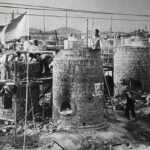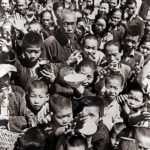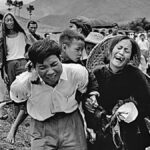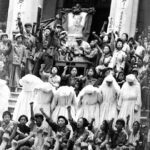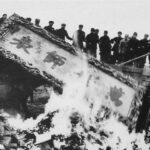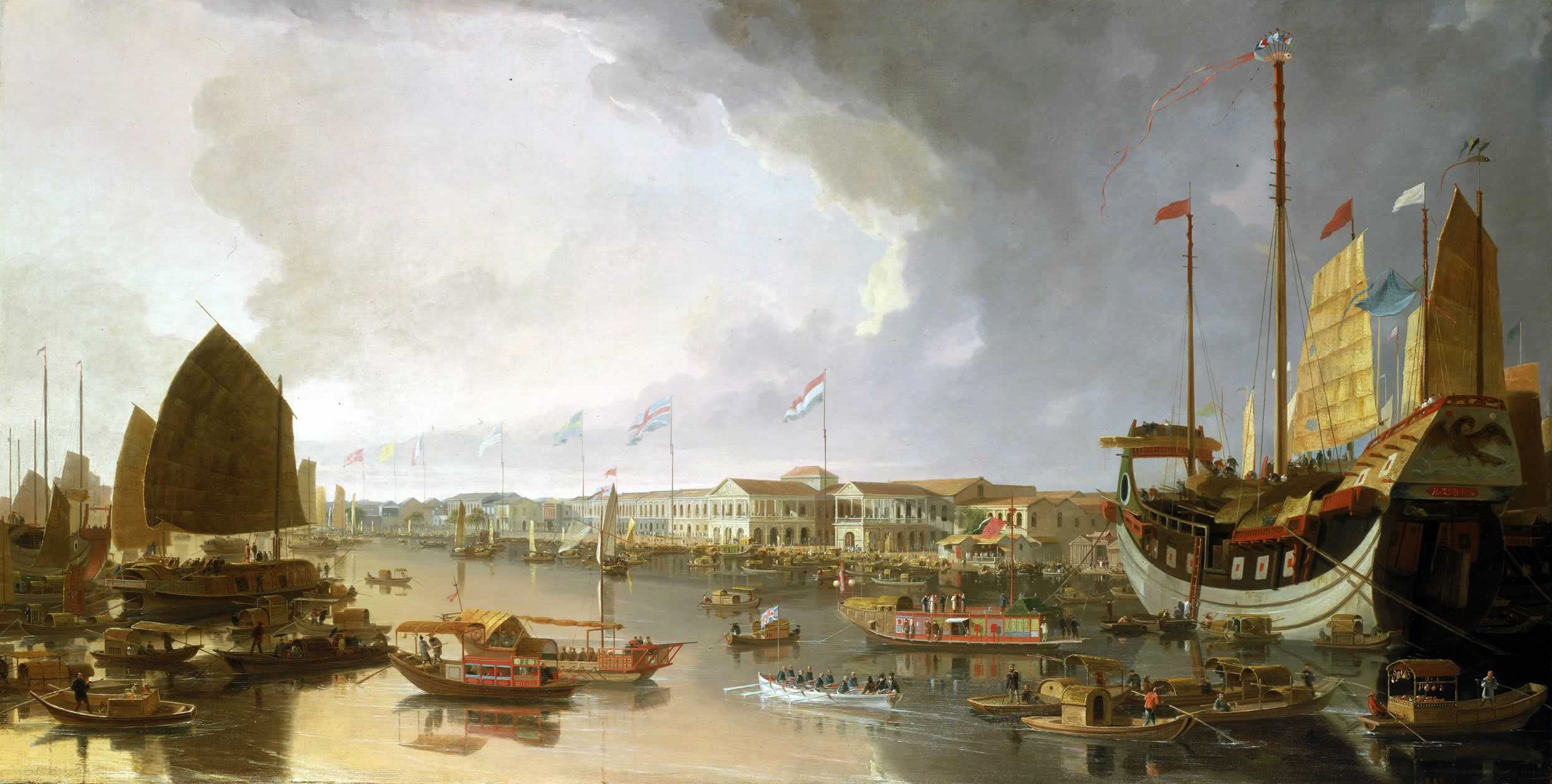

The 13 Hongs in Canton (now Guangzhou) during Qing Dynasty was the designated offices for export trades going to the West. One of the main branches upstream of this Pearl River is the one that flows through Yingde mentioned in the article. Note the white rowing boat in the lower centre with men in Western outfits and the British flag, and all the other European flags lining the bank. This was once where the largest tea trade took place in the world.
In the 17th century the county of Yingde in the southern province of Guangdong in China had suddenly become a transport hub of tea when the Qing emperor appointed Guangzhou as the sole export port for the whole empire. Yingde was a concentric point where land and water transport routes from various main tea regions met before going 150 km straight south by water to Guangzhou. Naturally, to benefit from the commercial opportunity, the historical tea area boosted its tea production. It became one of the first black tea main production areas. Ying Hong, one of the tea villages in Yingde was one of them. The area prospered.
The latter part of 19th century came decades of wars, but somehow the place hold up. Until the destructive political turmoils between the 1950’s to 70’s, when the whole mid-northern part of Guangdong became one of the poorest areas. ( Click here to read a brief account of the political turmoils happened in this period )
To create income for the money pit that was the central government, the authority aimed at lower price mass produced tea products comparable to the industrially-mass produced broken-grades from India or Sri Lanka for export, and turned the traditional farms into small plantation-like organisations. The people who worked the field thus had the same financial situation as those deprived workers in their competitions, while their traditional skills rotten.
It was not until the 1990’s when individuals were allowed to lease land and facilities to plan their own productions that the enterprising spirit of the Guangdong people could begin to turn their fortune. One of the tea projects survived the four decades of disasters — the study of transplanting selected Yunnan cultivars in the area for black tea production that had been started in the early 1950’s — became an opportunity.
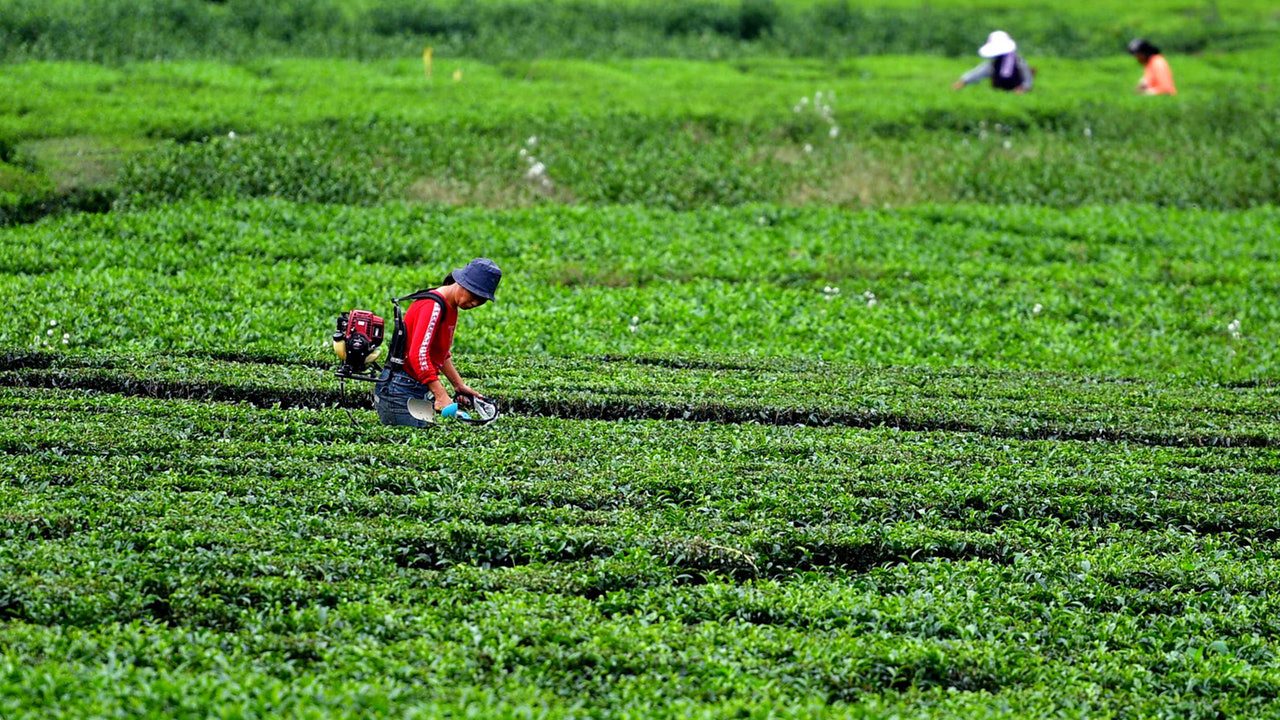

The Communist government began slowly testing a policy of leasing land to rural families for agricultural purposes in 1979, when the hell fire of Cultural Revolution began to cease. The plan gradually spread through the country in the late 80’s and production of various crops began to see great progresses, including those in tea.
Tea masters began to experiment producing a respectable traditional black tea from these cultivars. As we well understand, the terra and local climate can transform plants, much more so in the biology of tea. The originally rough tasting leaves of the extremely large leaves tea trees ( not bushes ) from the rocky tall mountains of Yunnan now yield sweet, floral black teas on the rolling hills of Ying De when made properly. Of all the cultivars, one that began in the experimental ground in Ying Hong has been picked as the winner for the taste potential of its leaves. Its cultivar serial number was 9.
So in the earlier decades of the 21st century, locals began to compete to produce the best Ying Hong Nine by fine tuning various horticultural and production practices. Techniques in farming and processing have thereby improved year from year. And now we have the fortune to enjoy one of the finest tasting black teas from China at great value.
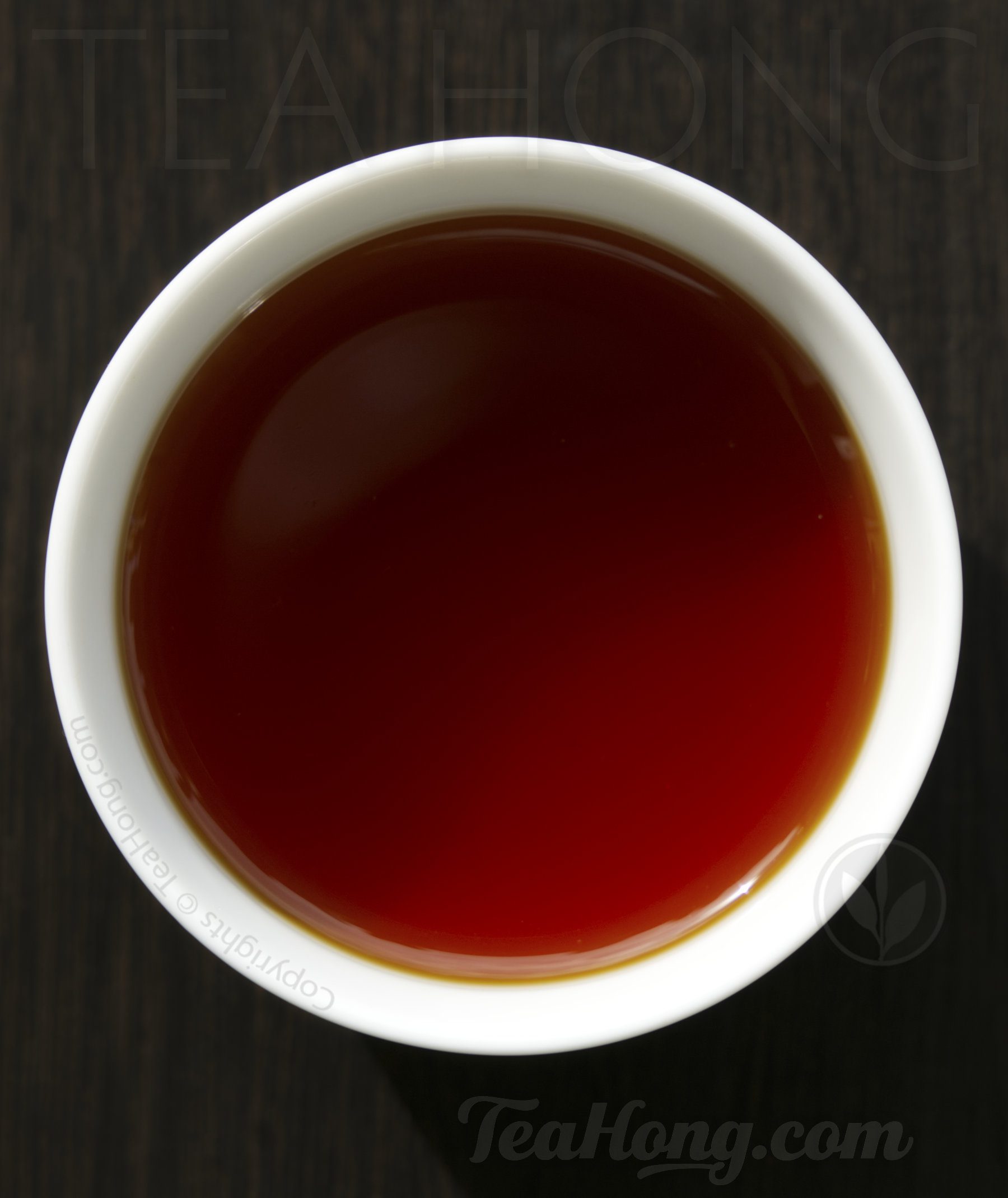

The deep and beautiful colour of the tea liquor of Ying Hong Nine resembles that of naturally sun-dried wolfberry.
Tea Hong’s beautiful Ying Hong Nine
- Great Leap Forward was a period generally referring to the years between 1958 to 1962. Actual actions came years earlier and the aftermaths dragged on. There were many movements during this era. Amongst others: people were being assigned to work and live in collective farms for constant drills of “learning” and “collective actions”; tens of thousands of small steel furnaces were built, with the belief that they could make China a modern and strong country against the American by producing more steel…
- Great Leap Forward: with most of the nation busy in the many movements and the anti-productivity result of collective farms and the insanity of ousting all traditional farm owners and shifting the farm labour to make steel, food shortage soon took over China. The famine that was caused by Great Leap Forward killed at least 30 millions according to the most conservative estimate.
- While there was no escape for the rural population inland, those near the south and were able to find ways through the movement restriction matrix of the Communist tried to escape to survive. Refugees soon stormed to the Hong Kong – China border and flooded the tiny city. The population rose from 500K in 1945 to 3 million in 1960, even with later border control.
- Cultural Revolution was another wave of movements which Mao manipulated the mass to suppress his political opponents. People were encouraged to report to their local gang leaders anyone suspicious of anti-revolution. Possession of a book, expression of a view, or even saying a traditional blessing could trigger indefinite imprisonment and violent abuse. Students prosecuted teachers, children against parents, hoodlums arrested officials.
- Cultural Revolution: Catholic nuns were being humiliated and publicly accused of spreading the poison of religion. Christians, Buddhists, Islamics or Taoists; a follower, a priest or a nun were all subjected to public torture, humiliation, false accusations, imprisonment, and endless abuses. Outside of religion, other excuses for prosecution could be the possession of something that others were jealous of, or being educated, had books that the uneducated mass did not understand, or even had been kind to others.
- Cultural Revolution saw the most thorough and fierce destruction of the Chinese heritage ever. Anything old was banished. All traditional teachings were defined as ill. In the picture, a plaque honouring Confucius was being burnt. Scholars roughly define the period lasted from 1966 to 1976, but I know people were still being tortured after 1979. This topic is still red taped in China and studies cannot be conducted there. As a result, experts have differences in the total fatality of this tragedy, but it is between 2 to 20 million. They were either killed, tortured to death, or committed suicide.
Note: This article is written in a popularised style from my original report of this piece of tea history. You do not see such facts elsewhere, other than the cultivar name and places, because while I try to rediscover what really happened, most others either recreate their versions of reality, or simply parrot what the authority wants them to say.
Comments (0)
Leave a reply
You must be logged in to post a comment.




